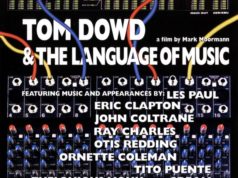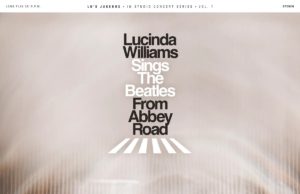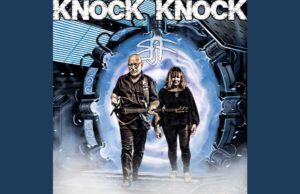 It wasn’t until the 1970s that THE symbol of ultra-success in the music biz was having your own plane. An aeronautical division was established within the U.S. Department of Commerce all the way back in 1926. At the time, its director William P. MacCracken famously said, “Commercial aviation is the first industry inspired by hero-worship and built upon heroes.” Just imagine what he would have thought of Led Zeppelin’s Starship.
It wasn’t until the 1970s that THE symbol of ultra-success in the music biz was having your own plane. An aeronautical division was established within the U.S. Department of Commerce all the way back in 1926. At the time, its director William P. MacCracken famously said, “Commercial aviation is the first industry inspired by hero-worship and built upon heroes.” Just imagine what he would have thought of Led Zeppelin’s Starship.
In any case, commercial aviation didn’t really become a major concern until after the Second World War. There was the Douglas DC-3, but the big game-changer came in 1949 with the unveiling of the de Havilland DH 106 Comet — the first commercial jet airliner.
By the 1950s, private “business” jets became a thing, but throughout the 1960s and early 1970s, most of the biggest stars of the music business were still flying commercial. There were some exceptions. The first star of the music industry to buy their own jet appears to be Frank Sinatra, who was the poster boy for the “jet set” — releasing his hit Come Fly With Me in 1958, coinciding with Pan Am’s launch of 707 service between New York and Los Angeles. Sinatra actually chartered a Boeing 707 for three months in 1962 on a world tour raising money for children’s charities.
After around 20 test flights, Sinatra purchased a $495,000 LearJet 23 — N175FS — in June 1965. He named it Christina II after his youngest daughter, used it for two years, logging more than 1,500 hours in it, usually between his Palm Springs home, Las Vegas and Los Angeles. Sinatra used it to woo Mia Farrow and loaned it to Elvis Presley in 1967 so The King could elope with Priscilla Beaulieu. He also loaned it to Marlon Brando and Sammy Davis Jr. so they could fly to Mississippi to meet Martin Luther King Jr.

The Lear 23 wasn’t Sinatra’s first plane. In 1961 he bought a huge Martin 404 dual-prop. Pink with brown trim, the plane set him back $100,000, but he spent $300,000 more to have it outfitted with a piano lounge, curved bar, bedroom, kitchen, hi-fi stereo and even an artificial moon and twinkling stars on the ceiling. The Lear 23 was much smaller, and basically just had a pair of very nice seats, a pull-out card table and a fully stocked liquor cabinet, because Frank was scared of flying. Mostly, though, he wanted the Lear because it was twice as fast as the Martin — meaning less time in the air.
James Brown nearly beat Sinatra to the punch. The Godfather of Soul bought a LearJet 23 in 1965 as well, becoming the first African American to own a private jet.
When The Beatles first visited the U.S. in 1964, they did so on a Pan Am charter, but they didn’t own their own plane, nor were they the first to charter one — that was Elvis. The King first chartered a flight in 1960. He didn’t purchase his own plane until April 1975, when he bought a 1960 Convair 880 from Delta Air Lines for $250,000. Elvis spent a further $800,000 over six months renovating and personalizing the aircraft, which he named the Lisa Marie, after his daughter. Many in his Memphis Mafia entourage referred to it as the “Flying Graceland” due to its lavish yellow, green and gold interior. The plane featured gold-plated seatbelt buckles, a telephone system, quadraphonic 8-track sound system, a master bedroom, guest room, lounge, conference room and two bathrooms with gold fixtures.
The behemoth Lisa Marie first took to the skies on Nov. 27, 1975. Each time it did, it cost Elvis in excess of $400,000. Still, Presley not only wanted his own plane, but dreamed of owning his own airline. He purchased two other planes during his lifetime. The first was a 1960 Lockheed JetStar business jet in 1975 while he was waiting for the Lisa Marie to be renovated. The $800,000 plane was named the Hound Dog II and first flew Elvis in October 1975. His third plane was a 1962 Lockheed JetStar L-1329, which he bought in 1976 and had outfitted with six red velvet swivel seats, sofas, shag carpeting, ashtrays, a microwave and wood panelling. It was left in the New Mexico desert after Elvis’ death on Aug. 16, 1977 where it sat for 40 years, exposed to the elements. The plane sold at auction last year for $260,000.

Led Zeppelin had two jets which they leased, rather than owned. The first of which, The Starship, is more famous due to its inclusion in the band’s 1976 concert film The Song Remains The Same.
Contemporary Entertainment, a company started by singer Bobby Sherman and his manager Ward Sylvester, paid United Airlines $750,000 for a 1960 Boeing 720B passenger jet in 1973 and then spent an additional $200,000 to turn it into The Starship. Led Zeppelin leased it for American tours in 1973 and 1975, seeking to find something better than the smaller Falcon Jet they had leased in late ’72. The band played a gig at San Francisco’s Kezar Stadium on June 2, 1973 and flew in the Falcon to Los Angeles for their show the following day at the Forum. Zeppelin, manager Peter Grant and their entourage faced awful turbulence on that flight, which prompted Grant to lease The Starship from Contemporary for $30,000. Their next show wasn’t until July 6 in Chicago.
The $200K that Contemporary spent was used to reduce the seating in the Boeing from 150 to 40, put in a bar, tables and chairs, an organ, revolving armchairs, a 30-foot sofa, a TV and an early VCR. There were three additional rooms — a bedroom, a second room with a fake fireplace, couch and floor pillows, as well as a shower room. When Zeppelin were leasing The Starship, Grant claimed the bedroom as his — complete with white fur bedspread. Fun fact: The Starship was actually the first Boeing 720B (N7201U) ever put in service. The last one in active service (N7538A) was owned by Canadian aircraft engine manufacturer Pratt & Whitney, which used it as a testbed for new engines. In May 2012, it was flown to CFB Trenton, where it remains on permanent display.
Sadly, The Starship is not on display anywhere. It went into storage at London’s Luton Airport in 1979 and was dismantled in 1982. Zeppelin used it for two months in 1973 and three months in 1975 — but many other acts leased it as well: Elton John had it for three months in 1973, four months in 1974, two months in 1975 and three months in 1976. Deep Purple leased The Starship for two months in the spring of 1974 and one month in the fall of ’74. Alice Cooper had it for the month of December in 1973. The Rolling Stones used it from June-August 1975. The Allman Brothers had it twice — first for three months in the summer of ’74 and again for two months in late ’75. Some more short-term users include Peter Frampton, John Lennon, Bob Dylan & The Band, Sinatra, Sonny & Cher, Gary Wright and Olivia Newton-John.
The other jet Zeppelin leased was known as Caesar’s Chariot — a retrofitted 1961 Boeing 720, which was bought from United Airlines by Caesar’s Palace casino. The 720 is a similar aircraft to 720B used for The Starship, just a bit shorter. The band were forced to use it because The Starship was grounded with engine problems when Zeppelin were scheduled to tour from April to July 1977. Like The Starship, Caesar’s Chariot had most of its seats removed, leaving seating for just 45 people instead of the 130 it was designed to carry. The retrofitted jet had big, comfy chairs, a Hammond organ, a bar and enough private rooms for each member of Led Zeppelin, who paid $2,500 a day for the use of the plane. Two years later, The Bee Gees hired Caesar’s Chariot when they were touring their Spirits Having Flown album. In the mid-’80s it was bought by the U.S. Air Force to be used in engine testing. Within a year it was completely disassembled.
Iron Maiden formed in the mid-’70s but didn’t get their own plane until much later — after their lead singer Bruce Dickinson became a commercial pilot. In 2008-2009, the band staged their Somewhere Back In Time world tour. It was Dickinson’s idea to charter a jet, allowing them to affordably get to more places — even ones which are typically deemed too small or remote. In February and March 2008 alone, the band flew 80,000 kilometres and managed to play 23 shows in 13 countries to 500,000 fans in North and South America, India and Australia. The key to the tour was the Boeing 757, which was nicknamed Ed Force One in honour of Eddie, the band’s mascot from its album covers. The plane not only carried the band, but their crew and 12,000 kilograms of gear. After the tour, the 757 was sold to FedEx.
For the band’s 2011 Final Frontier World Tour, they sourced a second 757 which was painted up and retro-fitted as Ed Force One. This aircraft was scrapped after the tour, but the bigger Boeing 747 that Iron Maiden used for their 17-month Book Of Souls World Tour in 2016-’17 is now owned by Air Atlanta Icelandic.

It’s not as cool a name as The Starship or Ed Force One — but Drake has his own plane, which he gets to use for free in exchange for the free publicity Cargojet gets from letting him do so. It’s a Boeing 767-200ER and he calls it Air Drake. The thing sounds nice, though — velvet couches, private suites, a theatre and gold detailing. Airline Bling would have been a better name.
I’ve already told you The Rolling Stones leased The Starship, but in more recent years they’ve leased different planes. In 2014-2015, they toured in two Boeing 737-400s — the first leased from GainJet, and the second from Swift Air. Both were painted up with the band’s famous tongue logo. Two years later they upgraded to an enormous Boeing 767-300ER, leased from Aeronexus in South Africa. This aircraft, used for the No Filter Tour, featured a leather couch that folded out into a bed and nearly 100 first-class seats.
Prior to their 1975 tour, the Stones leased two smaller turbo-prop planes: A 1957 Lockheed L-188 Electra and a 1948 Lockheed L-749 Constellation. Neither were luxurious. The Constellation was clearly quite old. When the band arrived in Australia, it was the last time a Constellation ever flew in its airspace. The flight engineer had to replace the cylinder heads between each flight — a daily ritual involving a box of parts which were kept onboard. Maybe this is why the Stones opted to lease The Starship on the following tour.
Aerosmith weren’t taking any chances when they were selecting an aircraft for their 1977 Aerosmith Express summer tour. Members of the band’s flight crew passed on a Convair CV-240 because they didn’t have confidence in the plane or its crew. This angered vocalist Steven Tyler and guitarist Joe Perry, who had pressured management to get this exact plane. But those feelings became much more complicated on Oct. 20, 1977 when that same Convair CV-240 crashed, killing Lynyrd Skynyrd singer Ronnie Van Zant, guitarist Steve Gaines, backing vocalist Cassie Gaines, assistant road manager Dean Kilpatrick, pilot Walter McCreary and co-pilot William Gray. The band Drive-By Truckers offer a fictionalized version of the tragic events on their landmark 2001 concept album Southern Rock Opera.
Finally, the practice of personalizing jets with coats of paint, logos and luxury furnishings is still very much in evidence in modern times. Among the other bands who have taken that classic photo on the tarmac next to their plane: Foo Fighters, The Killers, Def Leppard, AC/DC, Mötley Crüe, Guns ‘N’ Roses, The Jackson 5, Bon Jovi, Metallica, Pearl Jam, U2 and Slipknot.
There are plenty of playlists featuring everything from riding horses to piloting rockets. There’s yacht rock songs about sailing, biker and drag racing songs, surf rock, and long-distance trucking songs. So why not a playlist about jets? I’ll turn that “No Smoking” sign off and we’ll get comfortable…
• • •
Area Resident is an Ottawa-based journalist, recording artist, music collector and re-seller. Hear (and buy) his music on Bandcamp, email him HERE, follow him on Instagram and check him out on Discogs.










































